 |
Convert XVID to JPG/JPEG Sequence
|
JPG/JPEG is a commonly used method of lossy compression
for digital photography (image). The degree of compression can be adjusted, allowing
a selectable tradeoff between storage size and image quality. JPEG typically achieves
10:1 compression with little perceptible loss in image quality.
XVID to JPG/JPEG Converter Software converts XVID to JPG/JPEG
sequence files. So, you could get every frame image of XVID in
JPG/JPEG format. You can also set output frame rate and JPG/JPEG resolution in
the software. The output JPG/JPEG files look something like the following screen
shot.
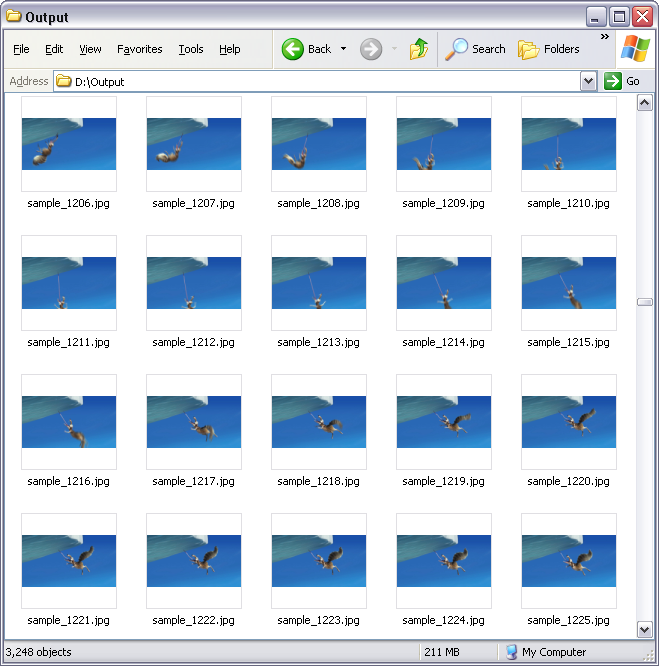
The software also supports other formats and portable devices such as VCD, AIFF, WebM (VP8), H.264, Android Tablet, CAF (Core Audio Format), Windows Phone,
etc. The software could convert DVD to M4V, 3G2 to TIFF image sequence, MKV to 3G2, MOV to M4V, M2TS to PPM image sequence, and so on.
XVID to JPG/JPEG Software supports batch conversion and, is compatible
with Windows 10/8/7/Vista/XP/2000.

What is XVID?
XviD is the name of a popular new video codec being developed as an open
source project by volunteer programmers from all over the world. The codec
is available for free, and it is incorporated in many hardware devices.
For example, Xvid specifies three warp points for its implementation of
global motion compensation as opposed to the single warp point implementation
of DivX. Enabling some of the more advanced encoding features can compromise
player compatibility. Xvid is Free Software and released under the GNU
GPL license. This means that the source code of the software is publically
available and programmers are allowed to make modifications to the code.
Also, redistribution of Xvid is permitted but only under the terms of the
GPL license. To give an example: uncompressed digital video is huge and
requires about 100 GB per hour at PAL resolution. The same video would
require just 500 MB per hour at very high quality when compressed with
Xvid. That is a compression ratio of 200:1. There are no feature, testing
or time restrictions for XviD, and it can be used safely and conveniently
all the time. GNU-licensed 1.0.x releases enjoyed greater freedom, although
there are still legislative restrictions on XviD use in some regions. Xvid
does not spy on you, is totally ad-free and does not transmit any of your
data behind your back. Since the source code of Xvid is available to the
public, everyone can check for themselves and see that there's no malicious
code in Xvid. This constant review by independent third parties makes Xvid
really safe to use. With usual, so-called proprietary software where source
code is not available to the public, users are stuck in case the creating
company goes bankrupt or discontinues the product.
What is JPG?
JPEG (Joint Photographic Experts Group) is an ISO/IEC group of experts
that develops and maintains standards for a suite of compression algorithms
for computer image files. JPEG is "lossy," meaning that the decompressed
image isn't quite the same as the one you started with. (There are lossless
image compression algorithms, but JPEG achieves much greater compression
than is possible with lossless methods.) JPEG is designed to exploit known
limitations of the human eye, notably the fact that small color changes
are perceived less accurately than small changes in brightness. Thus, JPEG
is intended for compressing images that will be looked at by humans. If
you plan to machine-analyze your images, the small errors introduced by
JPEG may be a problem for you, even if they are invisible to the eye. Regardless
of that selected image size in pixels, the camera menu will also offer
a smaller file size choice in bytes, related to quality, via JPG file compression.
This menu will offer a best quality setting which is the largest file,
and maybe intermediate sizes, and a smallest but worst quality choice.
The best (largest) JPG file size will still contain JPG artifacts, but
very mild, essentially undetectable, vastly better than the smallest file
choice. Even better, some cameras also offer a RAW or TIF format to bypass
JPG problems all together. These images may be large, but memory cards
are becoming less expensive, and larger or multiple cards are by far the
best quality solution. ISO/IEC 15444-12 is identical with ISO/IEC 14496-12
(MPEG-4 Part 12) and it defines ISO base media file format. For example,
Motion JPEG 2000 file format, MP4 file format or 3GP file format are also
based on this ISO base media file format.
How to Convert XVID to JPG/JPEG Sequence?
- Free Download XVID to JPG/JPEG
Converter Software
- Install the Program by Step-by-step Instructions
- Launch XVID to JPG/JPEG Software
- Choose XVID Files

Click "Add Files" to choose XVID files.

Choose one or more XVID files you want to convert and then click Open.
XVID to JPG/JPEG Software will open XVID files and get file information
of the file such as width, height, frame rate, video bit rate, audio sample rate,
audio bit rate, audio channels, and then display the information of XVID file
at conversion list.
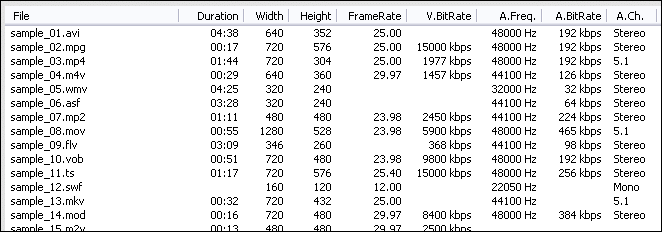
- Choose Output Format
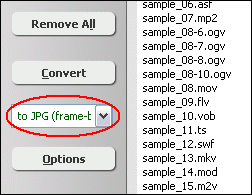
Click on combo-box of output format and then choose "to JPG (image sequence)".
- [Optional, for advanced user]
Set JPG Encoding Parameters
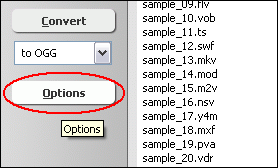
If you want to change JPG encoding parameters such as frame rate, video size,
aspect ratio, and so on, please click "Options".

And then, switch to tab "Video & Audio" and choose "JPG
(image sequence)" at "Output Format", and then set options
for image encoding.
- Convert XVID to JPG/JPEG
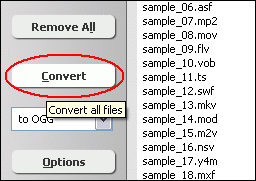
Click "Convert" to convert XVID to JPG/JPEG sequence.

The software is converting XVID files to JPG/JPEG.
- View and Browse JPG/JPEG Files
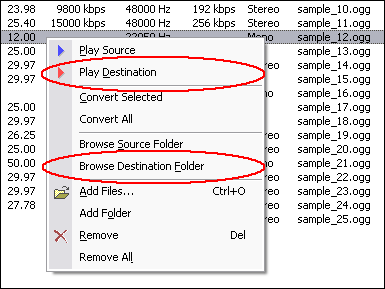
When conversion completes, you can right-click converted item and choose "Play
Destination" to view the first outputted JPG file; or choose "Browse
Destination Folder" to open Windows Explorer to browse the outputted JPG
files.
- Done
Top
XVID to JPG/JPEG Software is 100% clean and safe to
install. It's certified by major download sites.

Convert XVID to JPG/JPEG Related Topics:
|












